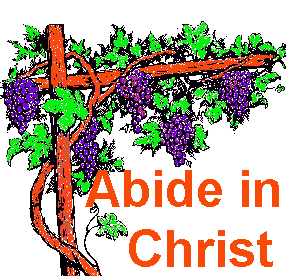John is a Gospel for
Everyone.
John has been called "the
single most influential book of the New Testament."
"For many Christian people the Gospel according to
St. John is the most precious book in the New
Testament. It is the book on which above all they
feed their minds and nourish their hearts, and in
which they rest their souls."
This Gospel has the most
"penetrating gaze" of all the New Testament writers.
A. T. Robertson says it is "the Holy of Holies of
the New Testament."
AUTHOR:
The human author was a Jew of Palestine, and an
eyewitness of what he describes. The author claims
to be "the disciple whom Jesus loved" (21:20, 24).
The book consists largely of personal experiences of
the author with Christ. "One may note all through
the book evidences of an eye-witness in the vivid
details." The internal evidence of the Gospel points
directly to the Apostle John, the son of Zebedee and
Salome, as the author (Matt. 19:20; Lk. 19:54; Mk.
3:17; Jn. 13:25; 18:16; 19:26; 20:2; Acts 3:4; 4:7;
Rev. 1:9). He was the younger brother of James, and
came from a fairly well-to-do family (Mark
15:40-41). He was a leader in the early church (Acts
3:1; 8:14; Gal. 2:9). All of the external evidence
from the first centuries support John, the son of
Zebedee, as the author. No other New Testament book
has stronger external evidence since there were no
real questions of authorship of John in the early
church. He also wrote the three Epistles of John and
Revelation.
DATE:
The majority of scholars date the Gospel of John in
the last decade of the first century. Church
tradition says John lived to an old age and to have
died a natural death at Ephesus about A. D. 100. He
was the last survivor of the apostolic group. The
Gospel was probably written later than the three
Synoptic Gospels, about A. D. 85-90. Three possible
locations are suggested—Ephesus, Antioch, and
Alexandria.
PURPOSE:
The author clearly states his purpose of writing in
John 20:30-31. He writes to win others to like faith
in Christ. John’s thesis is given in 1:1-18. This
Gospel was written for everyone.
THEME:
The deity of Jesus Christ is the theme of the book.
The Divine Sonship of Jesus is set forth in John
more than in anywhere else in the New Testament.
Jesus is non other than "the only begotten of the
Father" (1:14, 18). All of John’s evidence points to
this conclusion.
KEY VERSES:
20:30-31
KEY WORD:
The key word is "believe" which is found 98 times in
this Gospel.
STYLE:
John writes for the thinking man. It is full of
double meanings given in key words. He employs the
language of the intellectuals of his time. The plan
of this gospel is argumentative and not primarily
biographical. A. T. Robertson wrote: "The language
of the Fourth Gospel has the clarity of a spring,
but we are not able to sound the bottom of the
depths. Lucidity and profundity challenge and charm
us as we linger over it." John uses quotes and
allusions from the Old Testament. This Gospel
contains more of Jesus’ actual words than any of the
other three gospels. John uses long discourses. He
is a Jew who wrote in the Greek of his time.
OMISSIONS IN JOHN:
(1) No genealogy is recorded in this Gospel. (2) No
account of His birth is given because He was "in the
beginning." (3) Nothing about His boyhood is
recorded by John. (4) Nothing about His temptations
are recorded by John because God cannot be tempted.
(5). No transfiguration is specified. (6) There are
no parables in John. (7) No account of the ascension
is given, or (8) the great commission.
THEOLOGY OF JOHN:
The Apostle John gives a clearer teaching about the
Holy Spirit than any other gospel writer (14:26;
15:26; 16:7- 14). The book is filled with Deity. The
Deity of Christ is found in every chapter. "The Word
(logos) becomes flesh." John uses titles to portray
the deity of Christ: "the Word was God" (1:1), "the
lamb of God" (1:29), "the Messiah" (1:41), "the Son
of God" (1:49), "the King of Israel" (1:49), the
"Savior of the world" (4:42), "Lord and. . . God"
(20:28), "I Am" (4:24, 26; 6:35; 8:12, 24, 28, 58;
10:7, 9, 11, 14; 11:25; 13:19; 14:6; 15:1, 5). The
amazing thing is Satan and demons have almost no
place in this Gospel (8:44; 12:31; 17:15). John does
not record any demons being cast out. He treats
themes such as the logos, love, life, light, truth,
abiding in Christ, Spirit, world, lamb, wine,
temple, the deity as well as the humanity of Jesus,
etc. He traces a parallel development of faith and
unbelief. One of the unifying themes in the Gospel
is the growth of faith and development of unbelief.
GNOSTICISM:
Although a fully developed Gnosticism did not come
until mid-second century the incipient teachings of
the sect began early enough to effect the church at
the end of the first century. John’s opposition to
the teachings of Cerinthus and Docetism is clear.
Cerinthus held "that Jesus was a mere man upon whom
the divine Spirit descended for a season and then
left him." They "asserted that Christ did not exist
before He was born of Mary and was not begotten of
God that Father before all ages." The intense
feelings were so high that Eusebius tells a story of
John in a public bath house upon seeing Cerinthus
ran out without bathing, exclaiming, "Let us flee
lest the bath should fall in, as long as Cerinthus
that enemy of truth is with in."
JOHN’S PORTRAIT OF
JESUS: John has proven that Jesus
of Nazareth is the Son of God. Each picture of Jesus
in the Four Gospels adds a personal touch of its
own. When we bring the individual pictures together
the features reveal the same person, the God-Man
Jesus Christ. John, as does each of the Gospel
writers, selects events and teachings from the life
of Christ to fulfill his purpose in writing. "Each
Gospel to a certain extent has coloring of the
author in reporting the life and teachings of Jesus.
But each Gospel preserves an accurate and vivid
picture of Christ. We need all four pictures
including that of John’s Gospel for the whole view
of Christ." In his own personal way the aged Apostle
John supplements the narratives of the Synoptic
Gospels with personal recollections. The Synoptics
give mainly the Galilean, Perean and Judean
ministry, but John adds a considerable Jerusalem
ministry which is really demanded by allusions in
the Synoptics. Ninety per cent of the material in
the Fourth Gospel is unique, having no counterpart
in the others. This Gospel contains a framework of
history that is wanting in the Synoptics. Without
John we would not know the length of Jesus’
ministry.
Title: Introduction to
Gospel of John
Series: Introduction to
Bible Books



